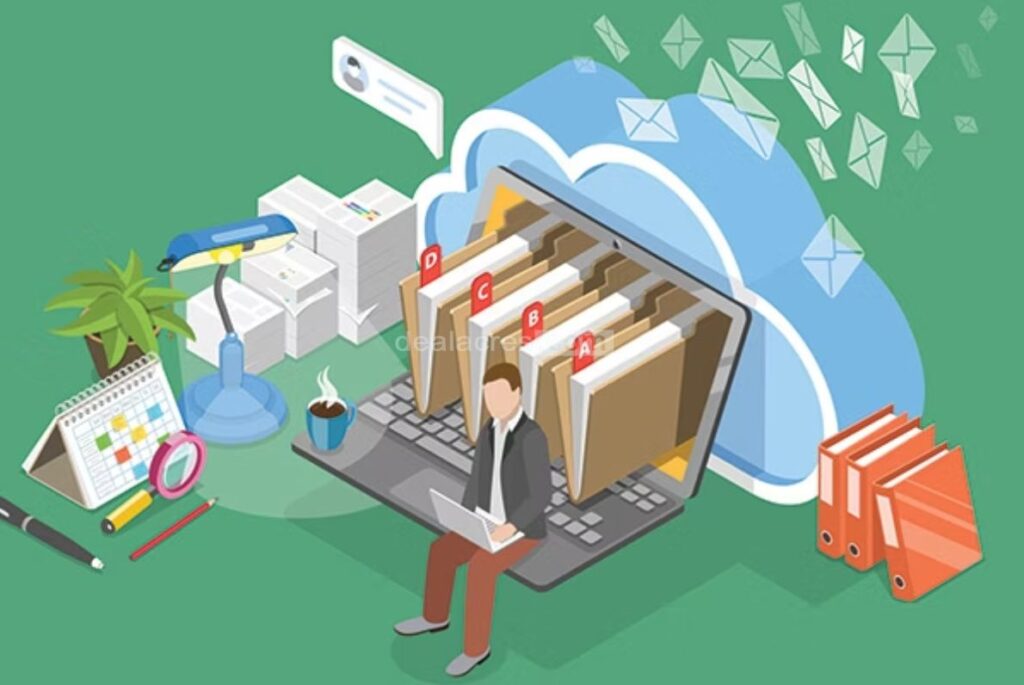Introduction
Embarking on a business venture often requires financial support, and a business loan can be the key to turning your entrepreneurial dreams into reality. In this straightforward guide, we’ll walk you through the process of getting a business loan in easy and simple language, helping you understand the steps involved and how to navigate the journey successfully.
I. Understanding the Need for a Business Loan
Before delving into the process, it’s essential to understand why you might need a business loan and how it can benefit your venture.

- Starting a New Business
If you’re in the early stages of starting a business, you may need funding for various purposes, such as securing a location, purchasing inventory, or covering initial operating costs.
2. Expanding an Existing Business
For established businesses looking to expand, a business loan can provide the necessary capital for scaling operations, opening new locations, or investing in additional equipment.
3. Managing Cash Flow
Businesses often face fluctuations in cash flow, and a loan can help bridge gaps during lean periods, ensuring smooth day-to-day operations.
II. Assessing Your Business Needs
Now that you understand why you need a business loan, assessing your specific requirements is crucial. This step helps you determine the amount of funding you’ll need and the type of loan that best suits your business.
- Identify Your Purpose
Clearly define the purpose of the loan. Having a clear goal will guide your loan application, whether for working capital, equipment purchase, expansion, or a specific project.
2. Calculate Your Funding Needs
Estimate the amount of money required to achieve your business goals. Consider all associated costs, including operational expenses, equipment costs, and any additional expenses related to your project.
3. Choose the Right Loan Type
Different types of business loans cater to various needs. Common options include:
- Term loans for long-term financing.
- Lines of credit for ongoing expenses.
- SBA (Small Business Administration) loans for government-backed assistance.
Choose the loan type that aligns with your business needs.
III. Preparing Your Business Finances
Lenders will assess your financial health before approving a loan, so having your financial documents in order is crucial.
- Create a Business Plan
A well-prepared business plan is an essential document for securing a loan. It should outline your business goals, target market, competition, and financial projections. A strong business plan showcases your commitment and vision.

2. Organize Financial Statements
Prepare your financial statements, including profit and loss, balance sheets, and cash flow statements. These documents provide a snapshot of your business’s financial performance and stability.
3. Check Your Credit Score
Your personal and business credit scores significantly influence the loan approval process. Obtain your credit reports, review them for accuracy, and take steps to improve your credit if needed.
IV. Researching Lenders
Not all lenders are the same; finding the right one for your business is crucial. Research different lenders to understand their offerings, requirements, and reputation.
- Traditional Banks
Traditional banks offer business loans with competitive interest rates. They may have stringent requirements, so be prepared to provide thorough documentation and meet specific criteria.
2. Online Lenders
Online lenders provide a quicker and more accessible option for obtaining business loans. They often have less stringent requirements but may have higher interest rates. Research various online lenders to find one that suits your needs.
3. Credit Unions
Credit unions are member-owned financial institutions that may offer favourable terms for business loans. If you’re a credit union member, explore their offerings and benefits.
V. Applying for the Business Loan
With your financial documents in order and a clear understanding of your business needs, it’s time to start the loan application process.
- Gather Required Documents
Different lenders may have varying document requirements, but common documents include your business plan, financial statements, tax returns, proof of ownership, and personal identification.
2. Complete the Loan Application
Whether applying online or in person, carefully complete the loan application. Provide accurate information, and be prepared to explain your business plan, financials, and how you intend to use the loan.
3. Understand the Terms and Conditions
Review the terms and conditions of the loan agreement carefully. Attention to interest rates, repayment terms, fees, and collateral requirements. Seek clarification on any terms you find unclear.
VI. Collateral and Personal Guarantees
Some business loans require collateral, which is an asset you pledge to secure the loan. This could be business equipment, real estate, or other valuable assets. Additionally, lenders may require a personal guarantee, making you personally responsible for the loan if the business cannot repay it.
- Identifying Collateral
If your loan requires collateral, identify assets you can use to secure the loan. Ensure that the value of the collateral meets or exceeds the loan amount.
2. Personal Guarantees
Be aware of the implications of a personal guarantee. Understand that your assets may be at risk if the business cannot repay the loan.
VII. Loan Approval and Funding
After submitting your application, the lender will review your documents, assess your creditworthiness, and decide on your loan.
- Approval Process
The approval process may take some time, depending on the lender and the complexity of your application. Be patient, and be prepared to provide additional information if requested.
2. Loan Terms and Conditions
Once approved, carefully review the final loan terms and conditions. Ensure that you understand all aspects of the agreement before accepting the loan.
3. Receive Funding
The funds will be disbursed to your business account upon accepting the loan agreement. Use the funds outlined in your business plan, and keep accurate records of all expenditures.
VIII. Repaying the Business Loan
Repaying the loan is crucial to maintaining a healthy financial relationship with the lender. Understand the repayment terms and plan accordingly.

- Create a Repayment Plan
Develop a repayment plan that aligns with your business’s cash flow. Ensure you have the funds set aside each month to meet your repayment obligations.
2. Stay in Communication
If you encounter financial challenges that may impact your ability to make timely payments, communicate with your lender. Many lenders are willing to work with businesses facing temporary setbacks.
IX. Building a Positive Relationship with Your Lender
A positive relationship with your lender can open doors for future financial support. Cultivate a professional and transparent connection by adhering to the terms of your loan agreement.
- Timely Payments
Make all payments on time and in full. Timely payments contribute to a positive credit history and strengthen your business’s financial standing.
2. Communication
Keep your lender informed about significant developments in your business. Whether it’s positive growth or unexpected challenges, open communication fosters a trusting relationship.
Conclusion
In conclusion, getting a business loan doesn’t have to be complex and daunting. By understanding your business needs, preparing your finances, researching lenders, completing a thorough application, understanding loan terms, providing collateral if required, and maintaining open communication with your lender, you can successfully secure a business loan and propel your venture toward success. Remember, each step is a valuable investment in your business’s future, and with careful planning, you can navigate the path to your entrepreneurial dreams.




